

***Description for this perennial available with future update!***
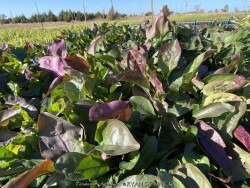

Foxglove Beardtongue / Native Penstemon, is also known as Penstemon digitalis. >>>>>
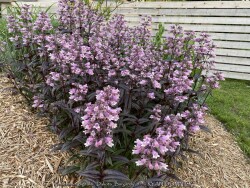

Dakota Burgundy Penstemon, is also known as Penstemon digitalis 'Dakota Burgundy'
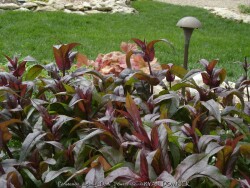

Dark Towers Penstemon, is also known as Penstemon digitalis 'Dark Towers'


Husker Red Penstemon, is also known as Penstemon digitalis 'Husker Red'
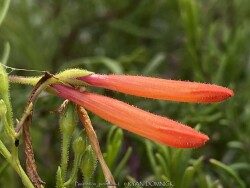

***Description for this perennial available with future update!***
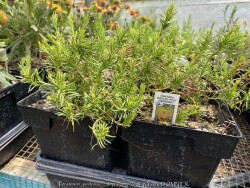

***Description for this perennial available with future update!***


***Description for this plant available with future update!***
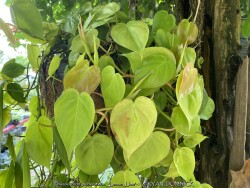

***Description for this plant available with future update!***
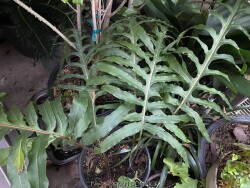

***Description for this plant available with future update!***
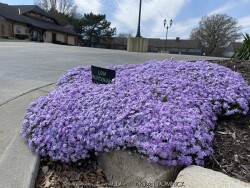

Blue Creeping Phlox, is also known as Phlox subulata 'Emerald Blue'
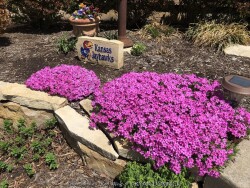

Red Creeping Phlox, is also known as Phlox subulata 'Red Wing'
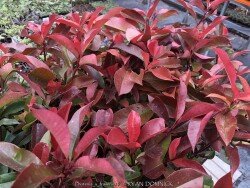

>>>>>Repeated or successive cold winters with complete foliage loss seem to be an issue with this and many evergreen zone 6/7 plants. One occasional difficult winter followed by mild winters is more tolerable. This is, however, a very vigorous growing plant so generally will recover in one summer with decent watering and fertilizer.
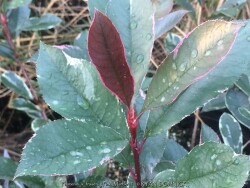

>>>>>Repeated or successive cold winters with complete foliage loss seem to be an issue with this and many evergreen zone 6/7 plants. One occasional difficult winter followed by mild winters is more tolerable. This is, however, a very vigorous growing plant so generally will recover in one summer with decent watering and fertilizer.
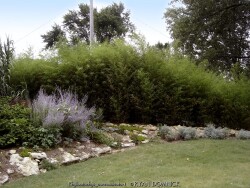

Yellow Groove Evergreen Bamboo (Phyllostachys aureosulcata) is a cold hardy running bamboo with a distinctive yellow stripe in the culm groove. Established bamboo groves provide a beautiful evergreen privacy screen. It provides ultimate wind protection, noise and traffic screening, and a hedge-like barrier. Bamboo is loved for its tropical lush appearance and a proven performance record in cold climates. It offers the only option for dry shade situations that stays green all winter. Bamboo is a great bird and wildlife shelter. You may also create trails through the bamboo grove for kids to play and built forts. Bamboo shoots 1" diameter plus are edible and quite tasty if harvested when under 6" tall and husked like corn. Timber species can obtain a maximum height of 15 to 20 feet may be achieved in 5 to 10 years. Realistic height of 10-15 feet should be expected in Kansas ( zones 5-6 ). Foliage is evergreen to 0 to 5 degrees F. Canes will defoliate at -5 to -10 degrees F. Canes die to the ground at -10 to -15 degrees. Root system will survive up to -25 to -30 degrees F as a perennial especially if mulched. Every few years a grove will experience complete winterkill: it is strongly advised to cut all dead growth to the ground for aesthetic reasons and and fire prevention. In the year after a complete winter-kill event, new growth will only grow back 1/2 as tall as it was before. It is speculated that after loosing all that foliage and biomass, it is only growing with 1/2 as much energy as before and with loss of potential photosynthesis for months in the spring before it is warm enough for new shoots to emerge. In our trial gardens in Lawrence, KS (zone 6a), all plants were killed to the ground but rhizomes survived with new growth by May. During this arctic blast of February, 2021, lows down to -17 degrees F on Feb 16th, 2021 were recorded. The longevity of this cold blast was also impressive: 10 days on a row with highs of 10-15 degrees F or lower, 8 nights of lows in the single digits and negatives, and 36 strait hours of 0 degrees F and mostly lower. As with any running bamboo, it is important to consider future spread. Spread can be controlled in lawn or forested areas by mowing at least twice a month during the months of May, June, and July and once in September. Another method of spread used mainly in China today is the shallow 12" deep sand-filled trench. Every summer, just run a shovel through the trench a few times to sever any escaping rhizomes. Also use this method for easy propagation. To keep bamboo from spreading into other landscape or formal lawn areas, you must install a continuous border around the grove. 14"-16" deep edging is needed for loamy to clay soils; 18-24" deep border is needed for sandy soils. An effective edging material is high-density polyethylene plastic professional rhizome barrier with lots of information available on proper installation techniques.


Golden Crookstem Evergreen Bamboo (Phyllostachys aureosulcata 'Aureocaulis') is a cold hardy running bamboo with a distinctive yellow culms. When planted where direct sun can shine on the culms from the south or west, they often develop a bright magenta highlight for a few weeks in the spring. Established bamboo groves provide a beautiful evergreen privacy screen. It provides ultimate wind protection, noise and traffic screening, and a hedge-like barrier. Bamboo is loved for its tropical lush appearance and a proven performance record in cold climates. It offers the only option for dry shade situations that stays green all winter. Bamboo is a great bird and wildlife shelter. You may also create trails through the bamboo grove for kids to play and built forts. Bamboo shoots 1" diameter plus are edible and quite tasty if harvested when under 6" tall and husked like corn. Timber species can obtain a maximum height of 15 to 20 feet may be achieved in 5 to 10 years. Realistic height of 10-15 feet should be expected in Kansas ( zones 5-6 ). Foliage is evergreen to 0 to 5 degrees F. Canes will defoliate at -5 to -10 degrees F. Canes die to the ground at -10 to -15 degrees. Root system will survive up to -25 to -30 degrees F as a perennial especially if mulched. Every few years a grove will experience complete winterkill: it is strongly advised to cut all dead growth to the ground for aesthetic reasons and and fire prevention. In the year after a complete winter-kill event, new growth will only grow back 1/2 as tall as it was before. It is speculated that after loosing all that foliage and biomass, it is only growing with 1/2 as much energy as before and with loss of potential photosynthesis for months in the spring before it is warm enough for new shoots to emerge. In our trial gardens in Lawrence, KS (zone 6a), all plants were killed to the ground but rhizomes survived with new growth by May. During this arctic blast of February, 2021, lows down to -17 degrees F on Feb 16th, 2021 were recorded. The longevity of this cold blast was also impressive: 10 days on a row with highs of 10-15 degrees F or lower, 8 nights of lows in the single digits and negatives, and 36 strait hours of 0 degrees F and mostly lower. As with any running bamboo, it is important to consider future spread. Spread can be controlled in lawn or forested areas by mowing at least twice a month during the months of May, June, and July and once in September. Another method of spread used mainly in China today is the shallow 12" deep sand-filled trench. Every summer, just run a shovel through the trench a few times to sever any escaping rhizomes. Also use this method for easy propagation. To keep bamboo from spreading into other landscape or formal lawn areas, you must install a continuous border around the grove. 14"-16" deep edging is needed for loamy to clay soils; 18-24" deep border is needed for sandy soils. An effective edging material is high-density polyethylene plastic professional rhizome barrier with lots of information available on proper installation techniques.
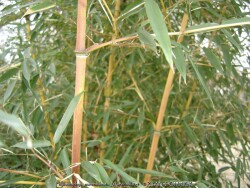

Lama Temple Crookstem Evergreen Bamboo (Phyllostachys aureosulcata 'Lama Temple') is a cold hardy running bamboo with a distinctive sulfur yellow culms. When planted where direct sun can shine on the culms from the south or west, they often develop a bright cherry-red highlight for a few weeks in the spring. Culm sheaths are more pale and pink than other bamboos. Established bamboo groves provide a beautiful evergreen privacy screen. It provides ultimate wind protection, noise and traffic screening, and a hedge-like barrier. Bamboo is loved for its tropical lush appearance and a proven performance record in cold climates. It offers the only option for dry shade situations that stays green all winter. Bamboo is a great bird and wildlife shelter. You may also create trails through the bamboo grove for kids to play and built forts. Bamboo shoots 1" diameter plus are edible and quite tasty if harvested when under 6" tall and husked like corn. Timber species can obtain a maximum height of 15 to 20 feet may be achieved in 5 to 10 years. Realistic height of 10-15 feet should be expected in Kansas ( zones 5-6 ). Foliage is evergreen to 0 to 5 degrees F. Canes will defoliate at -5 to -10 degrees F. Canes die to the ground at -10 to -15 degrees. Root system will survive up to -25 to -30 degrees F as a perennial especially if mulched. Every few years a grove will experience complete winterkill: it is strongly advised to cut all dead growth to the ground for aesthetic reasons and and fire prevention. In the year after a complete winter-kill event, new growth will only grow back 1/2 as tall as it was before. It is speculated that after loosing all that foliage and biomass, it is only growing with 1/2 as much energy as before and with loss of potential photosynthesis for months in the spring before it is warm enough for new shoots to emerge. In our trial gardens in Lawrence, KS (zone 6a), all plants were killed to the ground but rhizomes survived with new growth by May. During this arctic blast of February, 2021, lows down to -17 degrees F on Feb 16th, 2021 were recorded. The longevity of this cold blast was also impressive: 10 days on a row with highs of 10-15 degrees F or lower, 8 nights of lows in the single digits and negatives, and 36 strait hours of 0 degrees F and mostly lower. As with any running bamboo, it is important to consider future spread. Spread can be controlled in lawn or forested areas by mowing at least twice a month during the months of May, June, and July and once in September. Another method of spread used mainly in China today is the shallow 12" deep sand-filled trench. Every summer, just run a shovel through the trench a few times to sever any escaping rhizomes. Also use this method for easy propagation. To keep bamboo from spreading into other landscape or formal lawn areas, you must install a continuous border around the grove. 14"-16" deep edging is needed for loamy to clay soils; 18-24" deep border is needed for sandy soils. An effective edging material is high-density polyethylene plastic professional rhizome barrier with lots of information available on proper installation techniques.
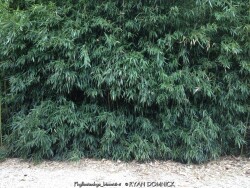

Bissett Dark Green Evergreen Bamboo (Phyllostachys bissetti) is one of the most cold hardy running bamboo there is. Foliage is bright green with dark green culms. Foliage density is very high. Established Bissett bamboo groves provide the most dense beautiful evergreen privacy screen of the cold hardy bamboos. It provides ultimate wind protection, noise and traffic screening, and a hedge-like barrier. Bamboo is loved for its tropical lush appearance and a proven performance record in cold climates. It offers the only option for dry shade situations that stays green all winter. Bamboo is a great bird and wildlife shelter. You may also create trails through the bamboo grove for kids to play and built forts. Bamboo shoots 1" diameter plus are edible and quite tasty if harvested when under 6" tall and husked like corn. Timber species can obtain a maximum height of 15 to 20 feet may be achieved in 5 to 10 years. Realistic height of 10-15 feet should be expected in Kansas ( zones 5-6 ). Foliage is evergreen to -5 to -8 degrees F. Canes will defoliate at -10 to -15 degrees F. Canes die to the ground at -15 to -20 degrees. Root system will survive up to -30 to -35 degrees F as a perennial especially if mulched. Every few years a grove will experience complete winterkill: it is strongly advised to cut all dead growth to the ground for aesthetic reasons and and fire prevention. In the year after a complete winter-kill event, new growth will only grow back 1/2 as tall as it was before. It is speculated that after loosing all that foliage and biomass, it is only growing with 1/2 as much energy as before and with loss of potential photosynthesis for months in the spring before it is warm enough for new shoots to emerge. In our trial gardens in Lawrence, KS (zone 6a), all plants were killed to the ground but rhizomes survived with new growth by May. During this arctic blast of February, 2021, lows down to -17 degrees F on Feb 16th, 2021 were recorded. The longevity of this cold blast was also impressive: 10 days on a row with highs of 10-15 degrees F or lower, 8 nights of lows in the single digits and negatives, and 36 strait hours of 0 degrees F and mostly lower. As with any running bamboo, it is important to consider future spread. Spread can be controlled in lawn or forested areas by mowing at least twice a month during the months of May, June, and July and once in September. Another method of spread used mainly in China today is the shallow 12" deep sand-filled trench. Every summer, just run a shovel through the trench a few times to sever any escaping rhizomes. Also use this method for easy propagation. To keep bamboo from spreading into other landscape or formal lawn areas, you must install a continuous border around the grove. 14"-16" deep edging is needed for loamy to clay soils; 18-24" deep border is needed for sandy soils. An effective edging material is high-density polyethylene plastic professional rhizome barrier with lots of information available on proper installation techniques.
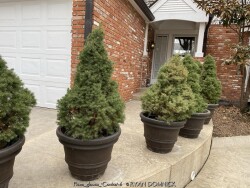

>>>>>Ultra cold-hardy plants from northern climates normally dislike our long hot humid summers; although we are on the Southern edge of this plants adaptability, it still survives reasonably well here. Look for a cold microclimate planting location such as East or North exposure.>>>>>
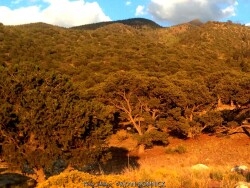

The Pinon Pine (Pinus edulis) is a small to medium size tree, reaching 10-20 feet. It is native to the Southwest including Colorado, New Mexico, Arizona, and Utah at elevations of 4,000-7,000 feet. Most commonly found along dry foothills and mountain bases in well-drained rocky, sandy or clay soils. Pinyon Pine is extremely slow growing so be patient and you or the next homeowner will be rewarded with a beautiful dense pine tree. Actually, this pine is often planted as a small ornamental specimen "shrub" and best sited with room to eventually grow into a small tree after 50 years. In Kansas, this pine is ideal for hot and dry sites with marginal (dry/rocky) soil but intolerant of wet or irrigated soils. Planting on a berm or top of a retaining wall is recommended. This can be a substitute where Mugo pine would fail from heat and drought stress; good air circulation is needed to avoid foliage diseases and pests. This species is difficult to find. The edible seeds, known as pinyon pine nuts are a popular wild and commercial nut crop. Its wood is hard, heavy and very aronatic when smoldering in chimineas or outdoor fireplaces. Ultra cold-hardy plants from desert mountain climates normally dislike our humid summers and although we are on the Eastern edge of this plants humidity tolerance, it still survives reasonably well here.
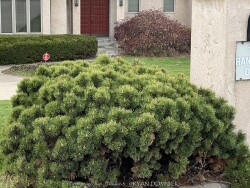

Mugo Pine is a dwarf needled evergreen pine usually ground as a small or large shrub. Native native to high elevation habitats from southern to central Europe, Mugo pine, also called Swiss Mountain Pine, handles plenty of subzero weather hardy down to at least -50. It also has pretty reasonable heat tolerance at least into zone 7. It prefers a rich, well-drained soil but will grow in just about anything including clay as long as it's not waterlogged. Growth rate is extremely variable depending on what cultivar or genetics of the seed grown variety you have. Growth can range from 1 to 15 feet. If needing several plants that will be consistent size, choose a cultivar. In the landscape, it is useful anywhere you need the structure of a needled evergreen shrub. It may also be grown in a raise container year-round as root hardiness will not be a problem in our eastern Kansas zone 6 climate. Maintenance is pretty easy, only needing to watch out for foliage devouring caterpillars and bagworms every so often. After many years, winter pruning is recommended to control size if planted in a tight area. Ultra cold-hardy plants from northern climates normally dislike our long hot humid summers; although we are close to the southern edge of this plants adaptability, it still survives reasonably well here. Look for a cooler microclimate planting location such as East or North exposure. Although not included in our edible plant database, the immature green cones can be picked and eventually dried out to yield drops of sweet tasting syrup and when boiled it is sometimes sold as "pine cone syrup". Obviously, we have not have the time or energy to try this! Much genetic diversity occurs within the species so if needing a specific sized plant, be sure to purchase a named cultivar. Pinus mugo ssp. 'Pumilio' is one of the best mugo pines for dark green color and tight mounding growth upto 3-5' tall and wide.


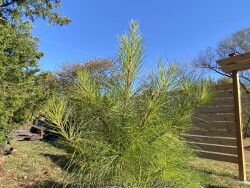

***Tree descriptions available with future update!***
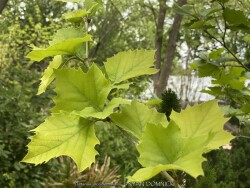

American sycamore tree (Plantanus occidentalis) is a beautiful large shade tree native to the eastern half of the United States along river banks, floodplains, and rich wooded areas. It is very easy to spot out a sycamore tree in the forest due to its attractive white peeling bark on older trees. The branching pattern is very picturesque with well shaped "U" branch intersections. The wood is coarse grained and twisted making it resistant to storm damage along with the branch angles. As a result, this tree can grow to enormous proportions. Sycamores tolerate a wide range of growing conditions but prefer moist rich deep soil and floodplains. Drought is tolerated but with a slower growth rate, otherwise growth rate is very rapid. Sycamore anthracnose is a problem during wet cold spring like weather causing trees to sustain twig and leaf damage and fill out very slowly. They almost always outgrow this by June as the weather heats up but can be an issue in the Northern part of the country. Although it's beauty is unmatched, sycamores can be messy at certain times of the year, dropping twigs, seed balls, bark strips, and large leaves. But no tree is perfect right? Sometimes Sycamore is grown for timber production. The wood is highly prized by woodworkers for it's beautiful lustrous texture when polished. Sycamore is best used if you need a decent shade tree in under 10 years but with plenty of room to mature into a large shade tree for future generations. Several improved cultivars now exist.
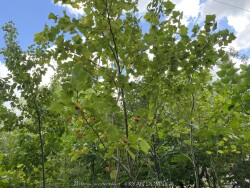

American sycamore tree (Plantanus occidentalis) is a beautiful large shade tree native to the eastern half of the United States along river banks, floodplains, and rich wooded areas. It is very easy to spot out a sycamore tree in the forest due to its attractive white peeling bark on older trees. The branching pattern is very picturesque with well shaped "U" branch intersections. The wood is coarse grained and twisted making it resistant to storm damage along with the branch angles. As a result, this tree can grow to enormous proportions. Sycamores tolerate a wide range of growing conditions but prefer moist rich deep soil and floodplains. Drought is tolerated but with a slower growth rate, otherwise growth rate is very rapid. Sycamore anthracnose is a problem during wet cold spring like weather causing trees to sustain twig and leaf damage and fill out very slowly. They almost always outgrow this by June as the weather heats up but can be an issue in the Northern part of the country. Although it's beauty is unmatched, sycamores can be messy at certain times of the year, dropping twigs, seed balls, bark strips, and large leaves. But no tree is perfect right? Sometimes Sycamore is grown for timber production. The wood is highly prized by woodworkers for it's beautiful lustrous texture when polished. Sycamore is best used if you need a decent shade tree in under 10 years but with plenty of room to mature into a large shade tree for future generations. Several improved cultivars now exist. Silverwoodtm Sycamore is a new introduction from Greenleaf Nursery in their Garden Debut® Collection. It features beautiful white bark and excellent branching. The thick, stiff leaves are bright green in summer and turn a bright golden-yellow in Autumn.


***Tree descriptions available with future update!***
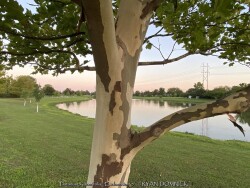

***Tree descriptions available with future update!***
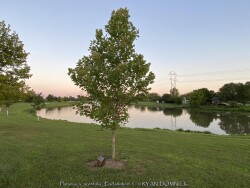

***Tree descriptions available with future update!***
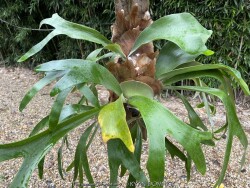

Staghorn / Elkhorn Fern (Tropical), is also known as Platycerium bifurcatum
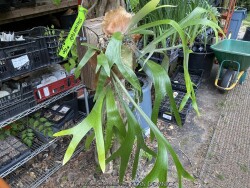

Staghorn / Elkhorn Fern (Tropical), is also known as Platycerium bifurcatum
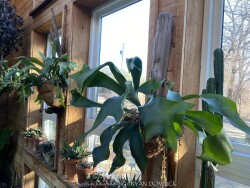

Staghorn / Elkhorn Fern (Tropical), is also known as Platycerium bifurcatum


Staghorn / Elkhorn Fern (Tropical), is also known as Platycerium bifurcatum
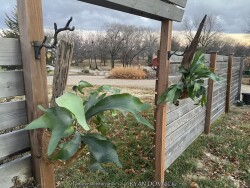

Staghorn / Elkhorn Fern (Tropical), is also known as Platycerium bifurcatum


Staghorn / Elkhorn Fern (Tropical), is also known as Platycerium bifurcatum
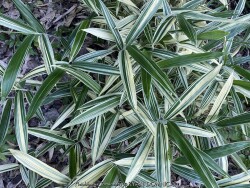

>>>>>To keep bamboo from spreading into other landscape or formal lawn areas, you must install a continuous border around the grove.
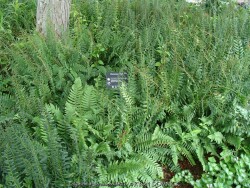

>>>>>is planted for its coarse, divided, triangular fronds in a medium green color. Native all continents in the Northern Hemisphere, it forms large colonies in forests with poor to average soil in sun to shade preferring sandy or peaty acidic soils. It colonizes medium to dry woodland areas, fields, old pastures, thickets, areas with disturbed soils, burned-out areas, and marsh edges. It can handle some Kansas drought in slightly acidic moisture-retentive soils but not full-on dry-shade. Foliage finally dies back to the ground in early autumn with "fiddle-heads" emerging and unfurling in mid-spring. Generally this plant holds its own in Kansas climates but fails to spread very quickly. Leaves can depreciate considerably in extremely hot weather and/or too much sun, particularly if soils are allowed to dry out to extremely. Root rot may occur in wet, poorly drained soils. With proper siting, it can be a "Once it's there, it's there forever" plant! I have seen an established planting thriving on the north side of a house for 20 plus years in Lawrence, KS.
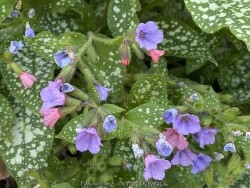

Lungwort (Pulmonoria saccharata) is planted for its unusual evergreen spekled white and green foliage. Foliage maintains well all summer provided that basic cultural conditions are met. Late spring flowers are a bright and colorful mix of blue, purple, and pink on the same plant changing colors as they age. Flowering last about 3-4 weeks and requires no dead-heading as new foliage swallows up dying flower stalks. Native to Europe, it slowly colonizes forests in humusy, medium well-drained soil in part shade to full shade. It can handle a little Kansas drought in in moisture-retentive soils but not full-on dry-shade. Foliage will flatten to the ground during drought then spring back up when moisture is available again. If low temperatures hit 0 degrees F, foliage finally dies back to the ground and re-emerges in early spring. Generally this plant holds its own in Kansas climates but fails to spread much. Leaves can depreciate considerably in extremely hot weather and/or too much sun, particularly if soils are allowed to dry out. Root rot may occur in wet, poorly drained soils. It is worth a try if you have a small spot to fill in a well-tended shade gardens.
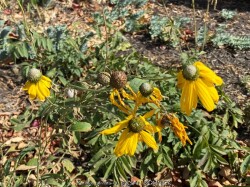

***Description for this perennial available with future update!*** Mexican Hat, is also known as Ratibida columnifera
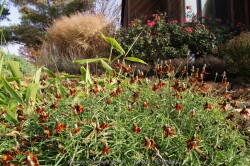

Red Mexican Hat, is also known as Ratibida columnifera 'Red'
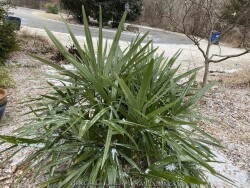

Needle palm (Rhapidophyllum hystrix) is a very special plant in that it is the world's most cold-hardy palm. Needle palm is native to the lower Southeast US with its original native range probably pushed south during the last Ice Age. This would explain its -20°F cold hardiness rating. Bright green foliage is shiny and fan-like; typical of any fan palm. When grown in a northern climate such as Kansas, growth is pretty slow at first and some winter damage should be expected if temperatures drop below -5 degrees F. It is advisable to mulch the crown of a newly planted Needle Palm with 6 to 8 inches of mulch for the first few years. Established plants get about 3 to 4 feet tall after 10-20 years. Needle Palms tolerate excessive moisture and rain gardens but prefer rich well-drained soil. Needle palm grow in full sun to full shade (much slower growth).They are also notably drought tolerant if grown in full sun but not in dry shade. They do need a hot and humid (Kansas) summer to build up stored energy for the next winter. There have been problems in the Eastern United States with crown-rot from winter moisture but generally in Kansas with pretty dry winters, this has not been a problem. Useful in the landscape as a tropical looking evergreen specimen plant. Unlike other Evergreens, needle palm maintains bright green foliage, not dingy olive green like many conifers. Combine with just about any other flowering plants and most garden themes. This true palm, however, is a must for any tropical theme garden. Mix with hardy banana (Musa basjoo), canna, or crinum lily! Rhapidophyllum hystrix has been planted in our trial gardens and at several residential gardens in Lawrence, KS (zone 6a) 10-15 years ago. During the arctic blast of February, 2021, lows down to -17 degrees F on Feb 16th, 2021 were recorded. The longevity of this cold blast was also impressive: 10 days on a row with highs of 10-15 degrees F or lower, 8 nights of lows in the single digits and negatives, and 36 straight hours of 0 degrees F and mostly lower. Minimal foliage damage resulted on established plants, more damage occured on small plants but they recovered by mid-summer.


Chinese Sacred Lily (Rohdea japonica) is a tropical-looking evergreen herbaceous perennial native to China and Japan. They are considered the ultimate dry-shade plant for eastern Kansas landscapes. They have everything a gardener might ask for; dependable dark green foliage, colorful red long-lasting fruits, evergreen during winter, and ease of care with very low maintenance. Evergreen foliage is daylily-like and hardy to about -10°F. If it gets colder than that, rohdea will be deciduous with no detrimental effects. The red fruits in the crowns of established plants persist many months through the winter! Rohdeas are also not the best choice for full sun. While they will survive, they will get foliage burn in the summer when over 100°F in afternoon sun. With poisonous foliage, these plants resist deer and rabbit browsing. Rohdea tolerates most soils except for poorly drained ones. Growth is quite slow with young plants but speeds up with establishment and rich soils with regular water. Established plants have thrived in our Lawrence Kansas zone 6a display garden for over 15 years enduring temperatures as low as -18°F. and periods with many days in a row in the single digits and negative low temps. Repeated or successive cold winters with complete foliage loss can be an issue with this and many evergreen zone 6/7 plants. One occasional difficult winter followed by mild winters is more tolerable. It's tolerance for deep shade makes up for this though. What a great plant for the dry shade garden!
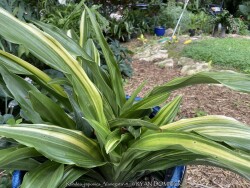

Chinese Sacred Lily (Rohdea japonica) is a tropical-looking evergreen herbaceous perennial native to China and Japan. They are considered the ultimate dry-shade plant for eastern Kansas landscapes. They have everything a gardener might ask for; dependable dark green foliage, colorful red long-lasting fruits, evergreen during winter, and ease of care with very low maintenance. Evergreen foliage is daylily-like and hardy to about -10°F. If it gets colder than that, rohdea will be deciduous with no detrimental effects. The red fruits in the crowns of established plants persist many months through the winter! Rohdeas are also not the best choice for full sun. While they will survive, they will get foliage burn in the summer when over 100°F in afternoon sun. With poisonous foliage, these plants resist deer and rabbit browsing. Rohdea tolerates most soils except for poorly drained ones. Growth is quite slow with young plants but speeds up with establishment and rich soils with regular water. Established plants have thrived in our Lawrence Kansas zone 6a display garden for over 15 years enduring temperatures as low as -18°F. and periods with many days in a row in the single digits and negative low temps. Repeated or successive cold winters with complete foliage loss can be an issue with this and many evergreen zone 6/7 plants. One occasional difficult winter followed by mild winters is more tolerable. It's tolerance for deep shade makes up for this though. What a great plant for the dry shade garden! Rohdea japonica 'Variegata' is a beautiful variegated variety with dark green and yellow stripes; very dramatic in winter!
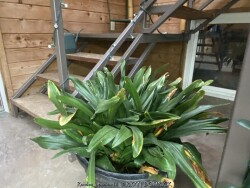

Chinese Sacred Lily (Rohdea japonica) is a tropical-looking evergreen herbaceous perennial native to China and Japan. They are considered the ultimate dry-shade plant for eastern Kansas landscapes. They have everything a gardener might ask for; dependable dark green foliage, colorful red long-lasting fruits, evergreen during winter, and ease of care with very low maintenance. Evergreen foliage is daylily-like and hardy to about -10°F. If it gets colder than that, rohdea will be deciduous with no detrimental effects. The red fruits in the crowns of established plants persist many months through the winter! Rohdeas are also not the best choice for full sun. While they will survive, they will get foliage burn in the summer when over 100°F in afternoon sun. With poisonous foliage, these plants resist deer and rabbit browsing. Rohdea tolerates most soils except for poorly drained ones. Growth is quite slow with young plants but speeds up with establishment and rich soils with regular water. Established plants have thrived in our Lawrence Kansas zone 6a display garden for over 15 years enduring temperatures as low as -18°F. and periods with many days in a row in the single digits and negative low temps. Repeated or successive cold winters with complete foliage loss can be an issue with this and many evergreen zone 6/7 plants. One occasional difficult winter followed by mild winters is more tolerable. It's tolerance for deep shade makes up for this though. What a great plant for the dry shade garden!
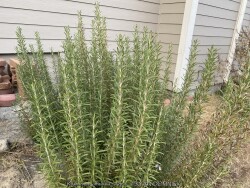

Rosemary is one of the most well-known herbal and edible plants. It features grayish green aromatic and evergreen foliage with small white flowers. Blooming is usually short-lived and not a main reason to grow Rosemary. This plant is native to Mediterranean climates with average moisture in the summer and dry, mild winters. Because of its heritage, it resents cold wet winters and needs well-drained sandy, silty, or rocky soil. In the short term, it will typically grow in any soil during the summer making it very useful even as an annual. In Kansas landscapes, it is commonly used as an annual or short-lived perennial with winter kill (below 0 to -10 degrees F) being it's number one enemy. It does not have very good ability to come back from the lower portion of the stem or root system like other perennials after winter-kill. Root rot is also likely when placed in poor draining soil and sometimes even in rich garden soil. Summer heat not a problem; to have a chance of survival as a perennial, plant in a protected area on a South or West wall. Rosemary is actually a woody shrub in mild zone 8 and 9 climates and grown like a in perennial in zone 6/7. When grown as a perennial, every so often you do need to trim it back to a few inches off the ground. Rosemary combines nicely with any other flowers or where needing a perennial with evergreen winter color. In Kansas, Rosemary is commonly grown as an outdoor patio plant that you move in for the winter to enjoy fresh clippings. When grown that way, remember that Rosemary is cold hardy to about 0 degrees F so you can skip the first few freezes before moving it in if you forget. This delay is probably beneficial because if you keep it in the house too long especially with poor light it will display poor quality elongated growth and die. Keep in a bright window and do not let it dry out completely. Strangely enough being from a desert climate, rosemary doesn't really warn you by wilting, if the soil gets extremely dry for too long, it just suddenly dries up and dies. Despite all of these pointers, rosemary is very easy to overwinter in the house when placing back out in the following spring. 'Arp' is exceptionally cold hardy; possibly the most cold hardy rosemary being a treu perennial in zone 6 with dark blue hummingbird feeding flowers.


>>>>>All Proven Winners® plants are legally propagated, healthy and vigorous, true to name, and tagged with color pictures and growing information.
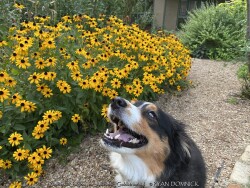

Fulgida Native Black-eyed Susan, is also known as Rudbeckia fulgida var. Fulgida
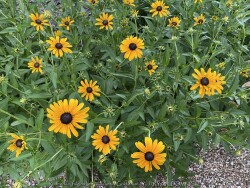

***Description for this plant available with future update!*** >>>> Good variety for customers with irrigation systems that water too much for other Black-eye Susan varieties.
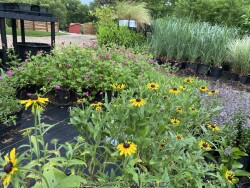

Native Black-eyed Susan, is also known as Rudbeckia hirta
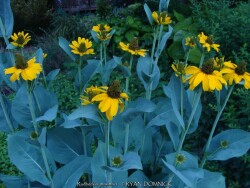

Great Coneflower / Blue-Leaf Coneflower, is also known as Rudbeckia maxima


***Description for this plant available with future update!***